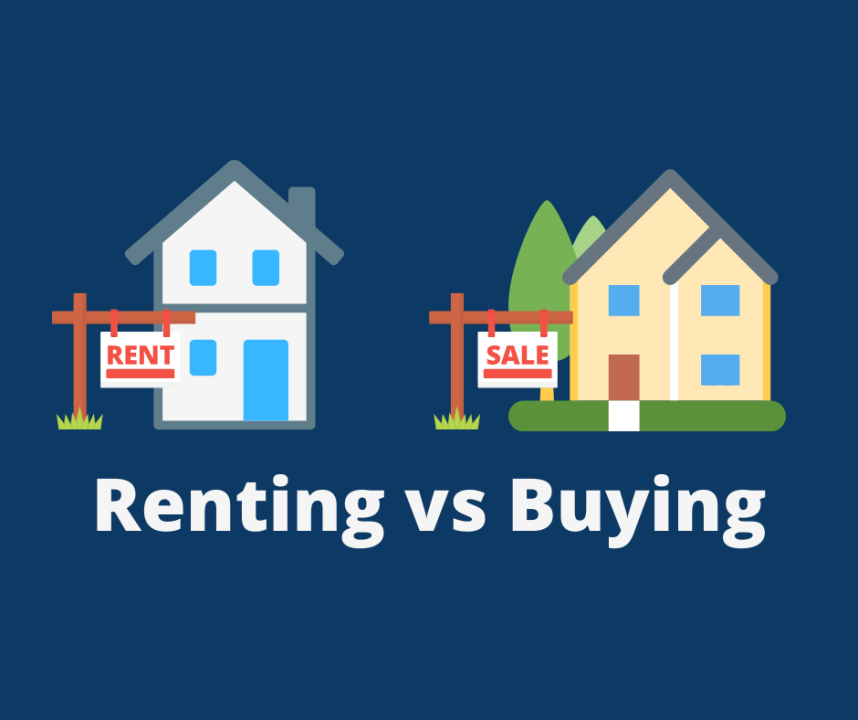Introduction: A Personal Housing Choice in 2025
Deciding whether to rent or buy a home as of February 27, 2025, is a major financial fork in the road. Homeownership often gets touted as the dream, but renting has its perks too. With 30-year mortgage rates at 6.8% and rents averaging $2,000 in many U.S. cities, the best choice hinges on your finances, lifestyle, and local market. Let’s weigh the pros, cons, and key factors.
Financial Considerations
Initial Costs
Renting kicks off lighter: a $2,000 deposit plus $4,000 for first/last month’s rent totals $6,000. Buying a $350,000 home? A 5% down payment ($17,500), 3% closing costs ($10,500), and $2,000 in fees hit $30,000 upfront—five times renting’s start. In 2025’s tighter budget climate, that gap matters.
Monthly Expenses
Buying a $350,000 home with 5% down ($332,500 loan) at 6.8% means $2,075 principal and interest, plus:
-
- Taxes: $300.
-
- Insurance: $125.
-
- Maintenance: $300 (1% of value yearly).
-
- Total: $2,800.
Renting that $2,000 apartment? Add $50 renter’s insurance—$2,050 total. Landlords cover repairs, but renters miss equity gains.
Building Equity
Owning builds wealth over time. Pay $2,075 monthly on $332,500, and in 7 years at 3% appreciation, your $350,000 home hits $426,000—$93,500 equity after $256,000 owed. Renting $2,000 monthly for 7 years ($168,000) builds nothing—your landlord’s equity grows instead.
Lifestyle Factors
Flexibility and Mobility
Renting shines for flexibility. A 12-month lease lets you chase a 2025 job in Denver or test Miami’s vibe, no strings attached. Selling a $350,000 home takes 2-6 months and 6% in fees ($21,000)—a hefty exit cost if life shifts fast.
Control and Customization
Buying means freedom. Paint your $350,000 home teal, add a $5,000 deck, or gut the kitchen—your call. Renters? That $2,000 apartment’s beige walls stay beige unless the landlord says otherwise, and $500 in upgrades might not stick.
Maintenance Responsibilities
Owning demands DIY or cash—a $2,000 HVAC fix or $300 gutter cleaning falls on you in 2025. Renters call the landlord for a leaky faucet, but delays (e.g., a week-long wait) test patience. Control versus convenience splits the choice.
Market Conditions Matter
Local Trends in 2025
-
- Hot Markets: Austin’s 5% yearly gains make a $350,000 buy ($426,000 in 7 years) tempting.
-
- Pricey Cities: San Francisco’s $1,200,000 homes and $3,000 rents favor renting—$9,000 monthly ownership trumps $3,050 rent.
-
- Price-to-Rent Ratio: $350,000 home/$2,000 rent = 14.6 (below 15 leans buy; above 20 leans rent).
Check 2025 MLS data—stagnant prices tilt toward renting.
When Renting Makes More Sense
Rent if you:
-
- Might move in 2 years (job hop?).
-
- Want to sample suburbs ($1,800) versus downtown ($2,200).
-
- Have $10,000 saved, not $30,000.
-
- Crave $2,050 predictable costs over $2,800 variable.
When Buying Makes More Sense
Buy if you:
-
- Plan 7+ years in one spot (roots down).
-
- Earn $80,000 with a 720 score ($2,800 fits).
-
- Seek $93,500 equity by 2032.
-
- Want a $5,000 custom patio.
Making Your Decision
Steps to Decide in 2025
-
- Finances: $20,000 saved, $6,000 monthly income, 700 score—buying’s viable.
-
- Lifestyle: Single, job-hopping? Rent. Married, stable? Buy.
-
- Market: $350,000 homes up 3% yearly, $2,000 rents flat—buy leans smarter.
-
- Tools: Calculatingamortgageloan.com’s calculator pits $2,800 owning versus $2,050 renting.
-
- Pros: Chat a realtor—$340,000 deal or $1,900 lease?
Conclusion: Your Life, Your Call
In February 2025, renting offers $6,000 entry and mobility—perfect for a $60,000 earner testing cities. Buying at $350,000 builds $93,500 equity and freedom—ideal for a $80,000 stable family. No one-size-fits-all exists; your savings ($20,000?), plans (5 years?), and market ($2,000 rent vs. $2,800 own) dictate. Weigh both, crunch numbers, and align with your 2025 goals—renting or buying can win with the right fit.
